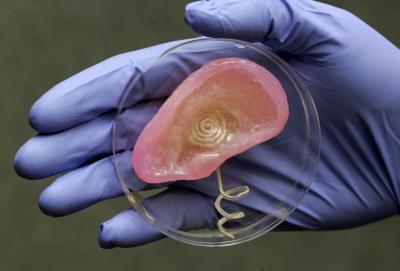
One of the most difficult parts of integrating electronics with biological tissue is getting the numerous tissues and materials to meld. At a lab in Princeton, New Jersey scientists are making progress on this effort using 3D printing.
According to Michael McAlpine, an assistant professor of mechanical and aerospace engineering at Princeton, “In general, there are mechanical and thermal challenges with interfacing electronic materials with biological materials.” In the past, researchers have attempted to overcome this hurdle by binding a piece of “seed” tissue to an electronic component.
Read more at ENGINEERING.com

